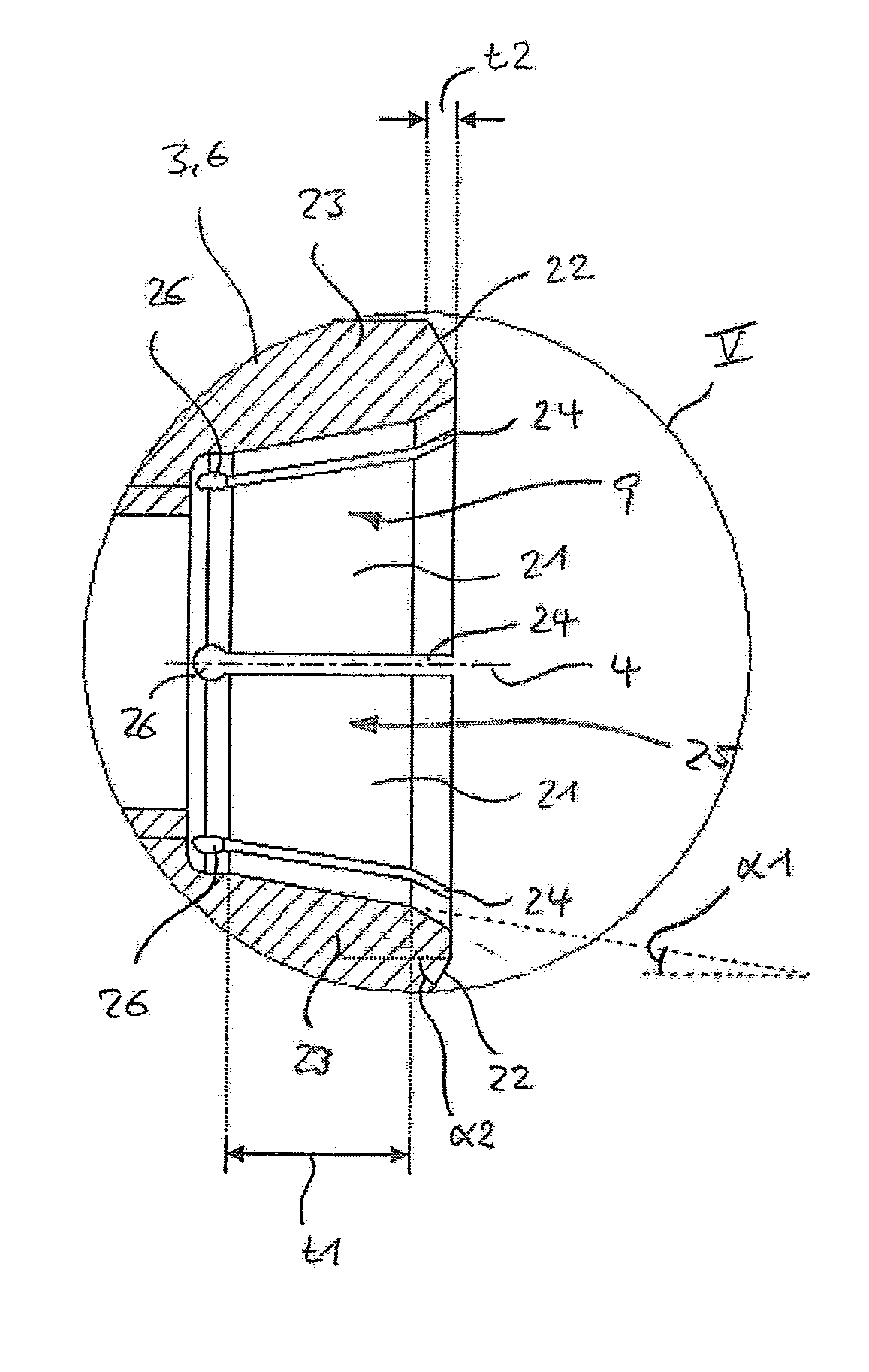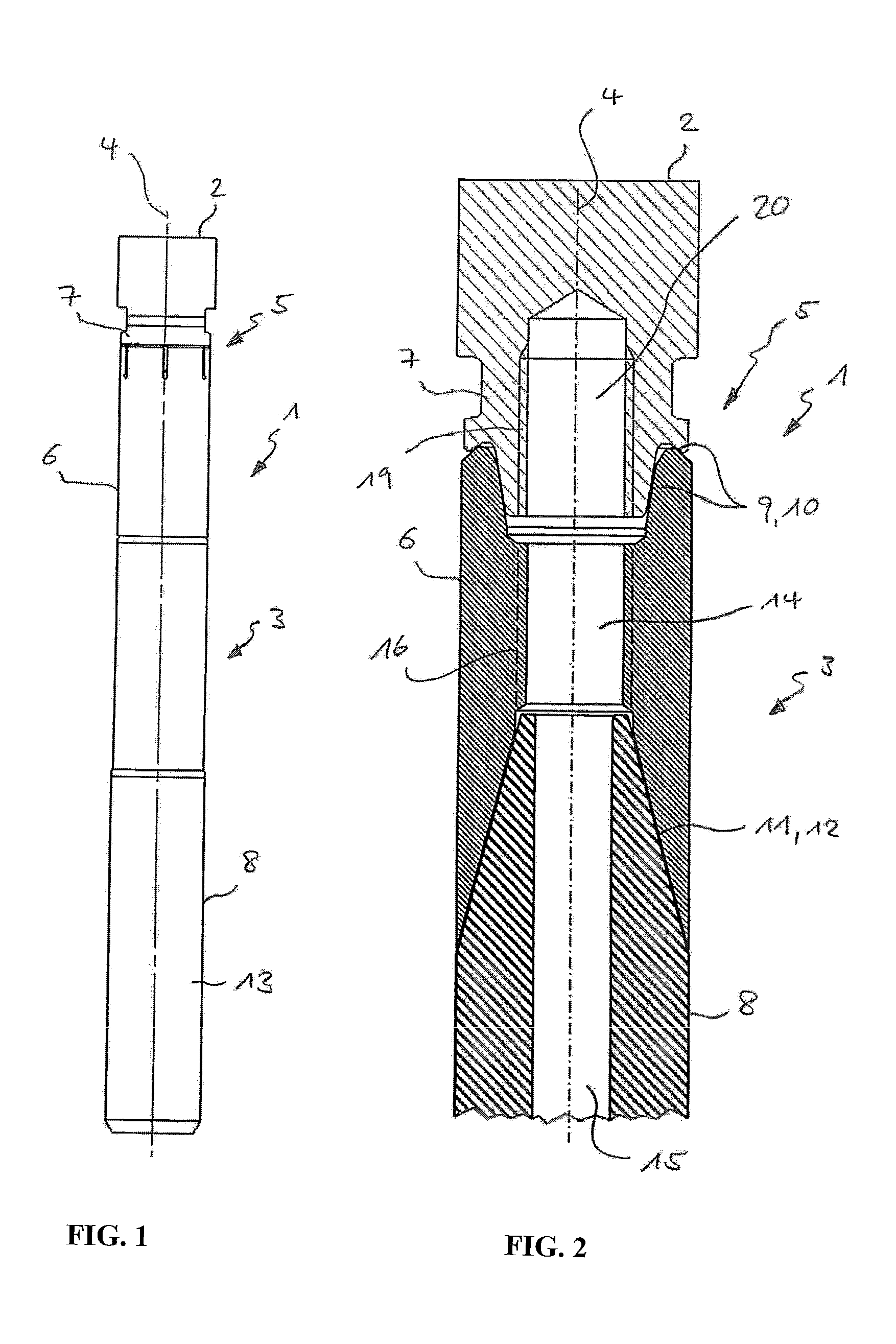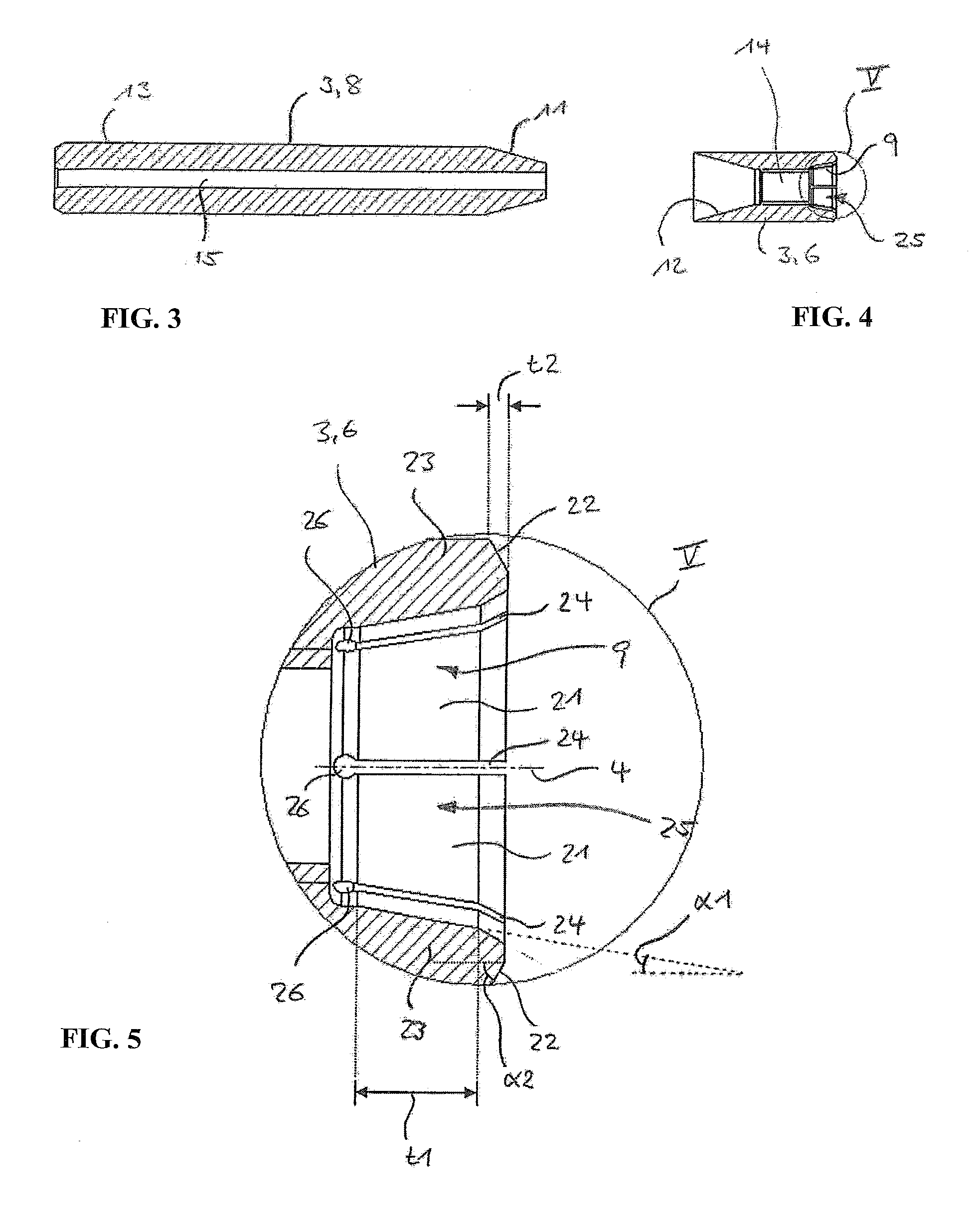Tool interface
- Summary
- Abstract
- Description
- Claims
- Application Information
AI Technical Summary
Benefits of technology
Problems solved by technology
Method used
Image
Examples
Embodiment Construction
[0041]The tool 1 represented in the figures comprises a (tool) head 2 and a (tool) shank 3. These two tool parts are detachably connected to each other via a (tool) interface 5, being centered in respect of a shank axis 4.
[0042]In the exemplary embodiment, the head 2, represented merely schematically in the figures, is a tool head provided for machining a workpiece by removing stock through rotation, in particular a drill bit, milling cutter or reamer. The shank 3, accordingly, serves to couple the head2 to a rotating spindle of a machine tool (not represented). To enable torques to be transmitted to the head 2, the interface part 5 is realized to fix the head 2 to the shank 3 in positionally and rotationally fixed manner, when the head has been mounted.
[0043]For this purpose, the interface 5 comprises two interface parts 6 and 7. In this case, the interface part 6 is assigned to the shank 3. This interface part 6 is produced as a separate part and only subsequently connected to a s...
PUM
| Property | Measurement | Unit |
|---|---|---|
| Circumference | aaaaa | aaaaa |
Abstract
Description
Claims
Application Information
 Login to View More
Login to View More - R&D
- Intellectual Property
- Life Sciences
- Materials
- Tech Scout
- Unparalleled Data Quality
- Higher Quality Content
- 60% Fewer Hallucinations
Browse by: Latest US Patents, China's latest patents, Technical Efficacy Thesaurus, Application Domain, Technology Topic, Popular Technical Reports.
© 2025 PatSnap. All rights reserved.Legal|Privacy policy|Modern Slavery Act Transparency Statement|Sitemap|About US| Contact US: help@patsnap.com



